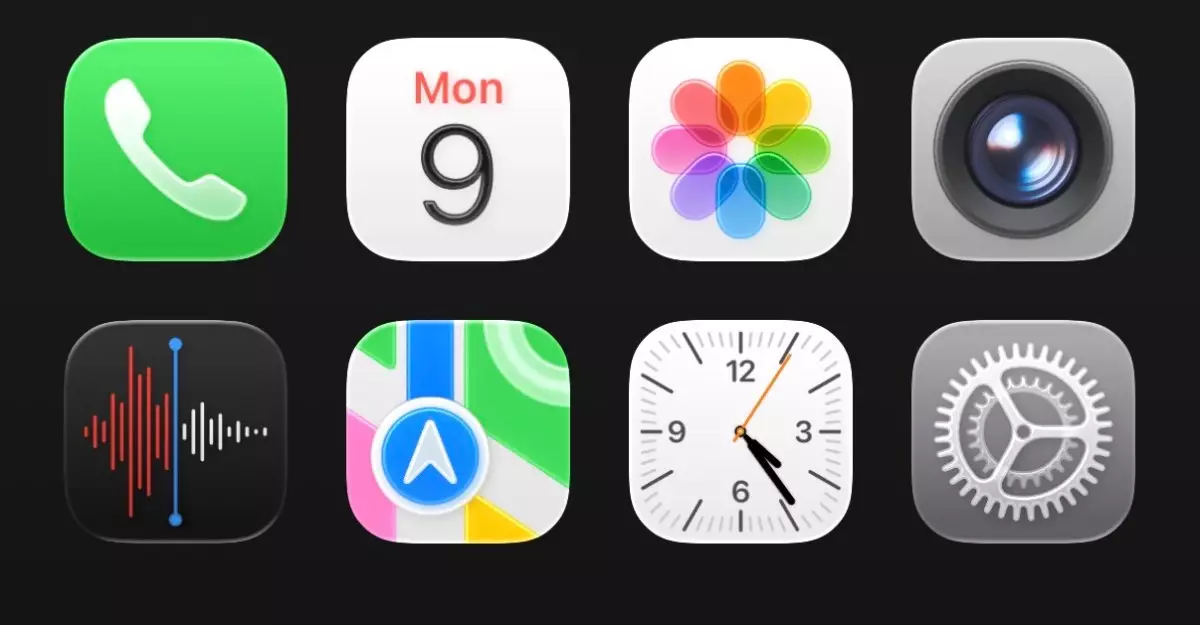Apple has always been a pioneer in the tech industry, often leading the charge in innovative user interfaces and sleek designs. With the announcement of the Liquid Glass design language at WWDC 2025, the company is poised to revolutionize how users interact with their devices. Unlike previous iterations that simply upgraded hardware performance or screen resolution, this new aesthetic integrates a captivating visual approach that vends emotional engagement with technology. After immersing myself in the striking features of the Liquid Glass design, I can’t help but feel a mix of excitement and trepidation about this bold change.
First Impressions: Beautiful Yet Confusing
Upon first encounter, the Liquid Glass aesthetic presents a stunning façade that almost dazzles the eyes. App icons appear translucent, with each button and tab evoking a ‘floating’ sensation over the lock screen wallpaper. The immediate visual impact is admittedly jarring for long-time Apple users accustomed to a more conventional look. Although I applaud Apple’s attempt to enhance aesthetic fluidity and depth, the drastic shift provokes initial confusion. There’s a fine line between captivating visuals and overwhelming clutter, and unfortunately, the Liquid Glass implementation treads perilously close to crossing it.
For instance, the Control Center, which now resembles a collage of transparency, feels chaotic even amidst a minimalist, grayscale home screen. The once-functional interface, now muddled with excessive transparency, makes it difficult for users to quickly hone in on the settings they intend to adjust. Here lies the paradox: while striving for a visually striking overview, Apple risks compromising usability in exchange for style.
Subtle Details: The Good, the Bad, and the Hopeful
As I navigated through the new interface, I discovered that not all changes led to disarray; some elements showcased impressive attention to detail. The Clock app, for example, embraces a new fluid animation as users switch between tabs, reminiscent of a water droplet dancing across the surface. This attention to finer points echoes Apple’s history of sophistication and innovation.
Yet, while some features shine, others falter. The keyboard now dons a sleek, revamped appearance, but it remains to be seen if it improves typing accuracy, as aesthetic enhancements should never come at the expense of functionality. The one glaring issue that stands out like a sore thumb is the excessive spacing in settings categories, which undermines the utility of the links. It feels like an analytical oversight where form trumps function; clean aesthetics should never overshadow user efficiency.
The Emotional Rollercoaster of Adaptation
What’s fascinating about Liquid Glass is the psychological journey that accompanies its adoption. Initially, my instincts resisted these changes, as I was taken aback by the unfamiliarity they presented. However, after spending several hours familiarizing myself with the iOS 26 developer beta, I began to appreciate the possibilities it offers. Just like any major technological shift, the beauty in adaptation lies not in immediate satisfaction, but in the potential for growth and positive change.
While my brain wrestled with the whirlwind of new adjustments, I sensed a deeper emotional connection forming—not to the design itself, but to the way it invited new interactions. Apple has a knack for transforming user experiences, and though Liquid Glass feels rough around the edges, I trust that future updates could refine its functionality. The key will be balancing exceptional aesthetics with intuitive usability, which could redefine what it means to engage with a digital interface.
Anticipation for Improvement
As anticipation builds toward the official launch of iOS 26, a sense of optimism fills the room—which is quintessentially Apple. The company has made a name by swiftly addressing customer feedback and enhancing previous designs. I have faith that the team will listen to the concerns outlined during this beta phase, refining the interface that still possesses immense potential to captivate and enchant its users.
The Liquid Glass design presents an exhilarating, albeit bumpy, evolutionary step for Apple. Embracing this fresh yet challenging aesthetic will demand an open-minded approach from users, balancing their attachment to the familiar against the allure of the innovative. As the landscape of tech continues to evolve at breakneck speed, Liquid Glass could very well illuminate the path forward, granting us unprecedented access to a liquid world of possibilities.

